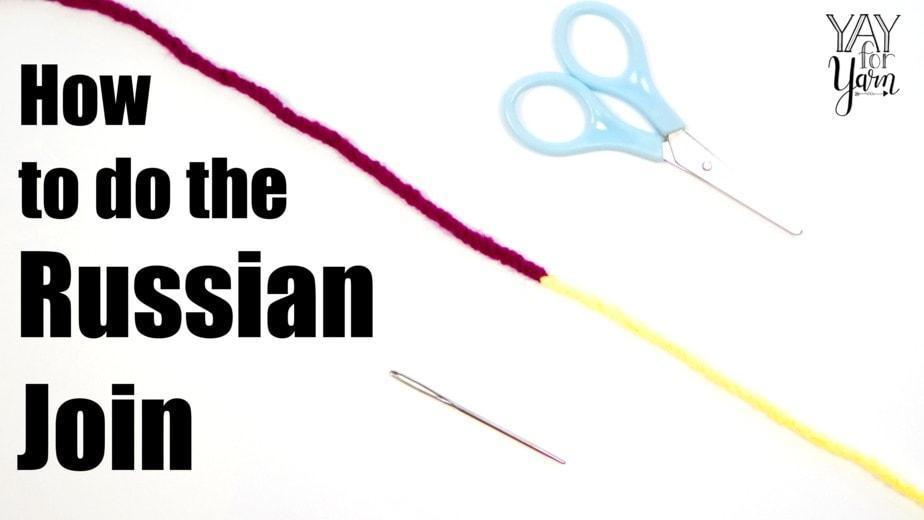Do you hate weaving in ends? Minimize the number of ends you’ll have to weave in by attaching new yarn with the Russian Join!
If you’re like me, you probably think weaving in ends is the most boring part of a knit or crochet project.
I haven’t heard of very many crafters who enjoy weaving in ends, but I have heard lots of crafters say that they do not.
Well, I don’t either. I try to avoid weaving in ends as much as possible, and I’ll do anything I can do to minimize the number of ends I’ll have to weave in later.
My method of choice? The Russian Join.
The Russian Join is one of my favorite ways to join a new yarn in a project. It does make the join area a bit thicker, but is still pretty inconspicuous in most yarns. This method creates a seamless, secure join, and does not require a knot, or weaving in any extra yarn tails.
I especially love using this trick in knitting projects, as I dislike weaving ends into knitting even more than I dislike weaving them into crochet.
This is one of the few instances where I prefer a straight-tipped yarn needle. I usually use a bent-tipped steel yarn needle, but for this technique, a straight one is ideal.
There are lots of ways to join new yarn and weave in your ends, but this is my preferred method in most cases. This works especially well for splicing yarns together to make your own gradient cake yarns, or for any project that involves stripes or changing colors.
So, do you have any suggestions for other ways to avoid weaving in ends? Do you love weaving in ends, or do you hate it?
What’s your favorite method to join a new ball of yarn?
Pin the image below to save this tutorial for later!







What a clever and very simple idea. Thank you!
This is great. You can’t even tell. Definitely going to use this when I can. Thanks so much for the great video.
Thank you for an excellent video on the Russian join!!!!
I forgot all about this technique.
I often use an overlapped join where about 9″ from the end of one ball of yarn I start by overlaying the old with the new with ends in opposite directions. Work with both yarns until the old one runs out.
After laundering/blocking, trim the ends flush and you’re done. I have only had this fail once and it was because I didn’t allow enough overlap on a slippery yarn.